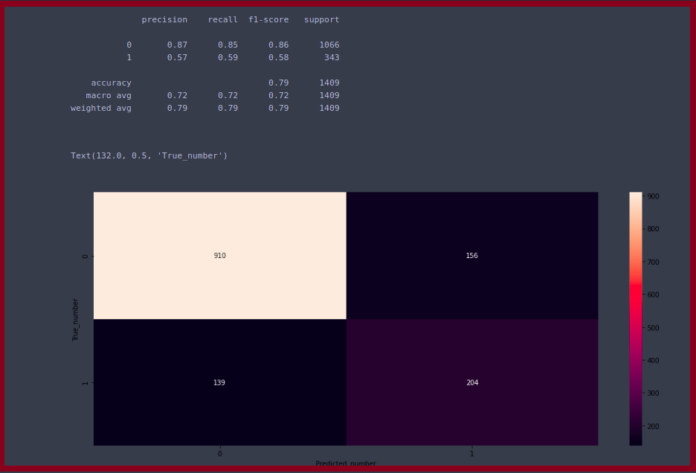What’s going on with the OnePlus 15? It seems there are some concerns about the phone getting so hot during benchmark tests that it overheats, which is never a good thing.
During our review, the phone didn’t reach this point, but it did get very hot during some tests.
We decided to see what would happen when it was pushed much harder, and better understand if overheating affects more than just one OnePlus 15 phone, or if the issues are less widespread.
What’s causing the heat?
Big, powerful chip
The OnePlus 15 is the first mainstream, globally available smartphone with the Qualcomm Snapdragon 8 Elite Gen 5 processor inside.
It’s Qualcomm’s latest, highest specification chip, and like all powerful processors, it’ll generate heat when it works hard.
OnePlus has used several methods to keep the Snapdragon 8 Elite Gen 5’s temperatures under control.
There’s a dual-layer vapor chamber inside the phone, which OnePlus calls a Cryo-Velocity cooling system, plus an “aerogel” pad protecting the screen from excess heat generated by the chip.
During our review period, the OnePlus 15 did not get hot or even warm during all normal tasks. The 3DMark benchmark app is a handy way to assess how a phone performs during intensive gameplay, and it was used for this task.
When running these tests, the OnePlus 15 got very hot, mostly around the chassis, and bordered on being too hot to comfortably hold for long. It never overheated, and the benchmark test completed each time.
However, others were not so lucky.
Overheating for some?
Not a good thing
The OnePlus 15 reviewed by Android Authority ran into problems with the 3DMark stress tests, and is shown on video overheating, and with a 52.7-degrees centigrade surface temperature.
When OnePlus was approached about the situation, it gave the following statement to the publication:
In everyday use — whether multitasking or heavy-duty gaming — the units run within normal thermal limits; we’ve received no reports of excessive heat.
Snapdragon 8 Elite Gen 5 delivers our highest peak performance yet, so in prolonged, all-out workloads, it reaches the thermal ceiling sooner.
We are already refining the thermal curve so that our peak performance remains uncompromised while surface temperatures stay comfortable.
Potential OnePlus 15 buyers are right to be concerned over reports of overheating, especially those who play graphically intensive games for extended periods.
We decided to push the OnePlus 15 hard to see what happened.
Could we get the OnePlus 15 to overheat?
We tried, and succeeded. Once
If you try to make a phone overheat, it’s possible to succeed, but this was not our intention.
We wanted to see if mostly normal situations pushed the phone beyond what it could handle.
The 3DMark app was called into action again, but not where we ran test after test in an effort to force the phone to overheat.
For my part of the experiment, I ran multiple 3DMark stress tests — which run for 20 minutes each — with periods between them just using the phone normally, and letting it cool down to a comfortable temperature.
Three tests resulted in a maximum temperature of 50 degrees centigrade being recorded by the app, with the lowest recorded maximum being 47 degrees centigrade.
Each time the sides of the phone were very hot, to the point where I would not want to hold it.
After these, a software update arrived and was installed.
After it was complete, I ran a fourth test — the “simplest” Solar Bay Stress test — and the OnePlus 15 overheated at loop 17. It resulted in the phone closing apps and restricting some features for about 15 minutes.
Subsequently, I ran further stress tests, and none caused the phone to overheat.
It’s worth noting I’m in the UK, where it’s fairly chilly, so the ambient temperature is low. Higher ambient temperatures will affect how a phone performs and handles stress tests.
What about other OnePlus 15 phones?
No other overheating
Android Police’s video host Ryan-Thomas Shaw also ran 3DMark stress tests on his OnePlus 15, and while the phone did get hot, it completed the tests and did not overheat.
Talking about his experience, he said:
The OnePlus 15 gets uncomfortably hot in extreme stress tests, but I’ve not experienced any unusual behavior like app crashes or shutdowns.
Android Police’s Stephen Radochia has also been using the OnePlus 15, and he noted:
I also didn’t notice any undue overheating, and I’m pleased that the Snapdragon 8 Elite Gen 5 is a power-efficient chipset like its predecessor.
But it did overheat, right?
Yes, but is it representative of a problem?
Yes, I managed to get the OnePlus 15 to overheat. However, it was just once, and in quite a specific circumstance: following multiple tests and a software update.
This comes close to willfully trying to make the phone overheat. The stress tests in the 3DMark app are very tough, pushing a phone’s performance further than the vast majority of games and apps.
Repeatedly running them is like not sleeping. Eventually, things are going to give out.
However, it does prove the Snapdragon 8 Elite Gen 5 runs hot, just as others, including Android Authority, have noted.
That said, it doesn’t seem to be a widespread issue affecting all OnePlus 15 phones, and not everyone will run into situations where the phone is working so hard it gets too toasty.
It’s not the first time overheating problems have affected the first phones with a brand-new Qualcomm chip inside.
The 2024 Realme GT 7 Pro was one of the first with the Qualcomm Snapdragon 8 Elite, and until a software update arrived to “fix” the issue, it couldn’t even complete one 3DMark stress test without overheating.
This was also a problem that affected practically all the GT 7 Pro phones tested by the press at the time, unlike the OnePlus 15.
Problems around the OnePlus 15 overheating, or not, are currently anecdotal, and probably should not put you off the device just yet.
The real test will be when the phone gets into more people’s hands, and it’s put through its paces in new and varied ways.
Credit: OnePlus
OnePlus 15
- SoC
-
Qualcomm Snapdragon 8 Elite Gen 5
- Display type
-
LTPO 165Hz
- Display dimensions
-
6.78-inches
- Display resolution
-
2772 x 1272
- RAM
-
12GB / 16GB
- Storage
-
256GB / 512GB








